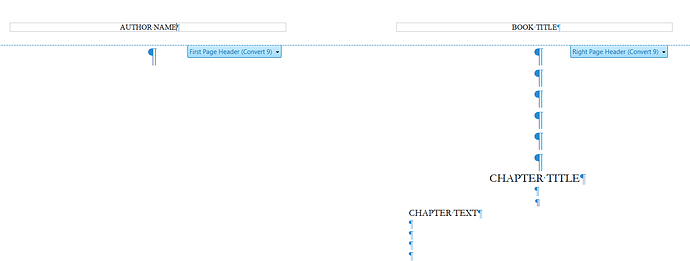Update: I think I figured out the reason I was having so much trouble. I think the secret lies in applying page breaks. When I applied manual page breaks (insert → more breaks → manual breaks) there was a “style” box I didn’t notice. Selecting the page style from that box seemed to make a difference. I haven’t totally figured it out, but that seems to be what I needed.
I’m using a pre-formated template that already has headers, footers, page breaks, etc. applied. However, I want to start a chapter of my book on one page farther than the template has it formatted for. This means having a different header on the new chapter page, so I can leave it blank, while having my name and book title on subsequent pages in the chapter.
I’ve inserted a page break, but even when I do this, the header is still labeled as "right page header, where the page before (where the chapter originally started as per the template) is labeled as “first page header.”
I’ve tried playing around with page styles, searching the help documents, and everything, and for the life of me I can’t figure out how to change this.I’ve included a screenshot below that I hope will help illustrate the problem.
I want that blue part where it says “right page header” to instead say “first page header” so I can delete “book title” from that page while having it be present on the other pages.
Thanks!
Edit: Here’s the original template. As everyone theorized, it is MS Word. For the most part, everything seemed to translate pretty well into Libre, but not the headings, I guess. I hope this uploads correctly. 6 x 9 in.docx

